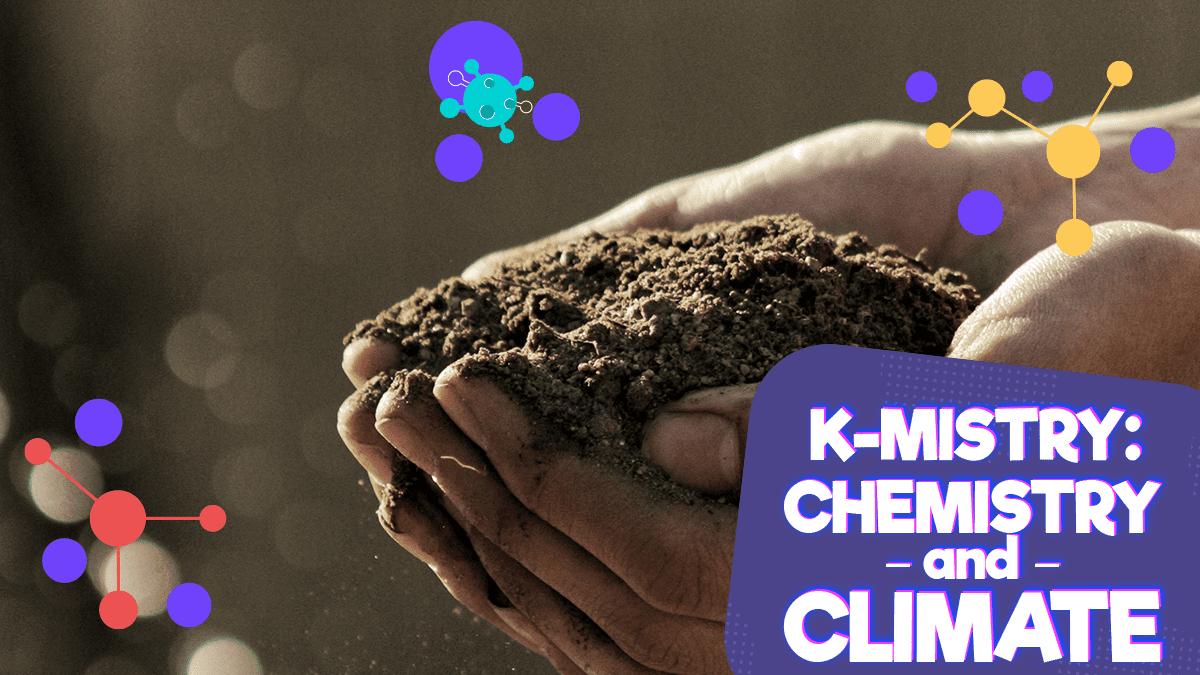There’s chemistry in pretty much everything – even soil!
Let’s go back to basics, what is soil? There’s more to it than the muddy stuff you find in the garden, in fields and up hills. Soil is the thin layer of material that covers the Earth’s land surface. It’s made from rocks deep underground.
It takes many, many years for rocks to weather into soil. In fact, it can take TWO THOUSAND years to make just 10 centimetres of fertile soil.
Weathering could be the result of water slowly running over a rock or the wind blowing across it. Or it could be from chemical or mineral changes. Or because of living things – things like tiny microorganisms or insects and worms, and even the decaying matter from larger animals.
And here’s a top tip. Worms can be a sign of healthy soil! They aerate the soil and also eat organic material, so a big worm population means the soil is rich in nutrients.
Soil comes in all shapes and sizes and flavours, forests, peatlands, wetlands, salt marshes…
Because different rocks are made of different chemicals, these could affect the quality of the soils. Loam soils are great for farming – they’re rich in sand, silt and clay which helps keep the moisture in. Sandy soils are great at draining water, but they don’t have as many nutrients. But whatever their background, all soils are important.
If you’re wondering what soil has to do with climate change – soils are the largest store of carbon on Earth!
In 2017, scientists recorded that whilst the EU had 4.5 billion tonnes of CO2 emissions, here’s the amazing thing… there was 75 billion tonnes of CO2 stored in Europe’s soil. So that’s why it’s important to look after the soil, or else all of that CO2 will go back into the atmosphere.
Cutting down forests, building over fields – even digging or tilling the fields to remove weeds, can all reduce or erode the available soil. By eroding, we mean that the soil becomes thinner, and rain and wind can find it easier to wash and blow it away.
We have to be careful about what chemicals we add to ecosystems and chemists are working on safer herbicides which might solve the problem of weeds without losing soil. It’s a kind of balancing act. And plants do their bit too – thanks to the soil they grow in.
So as well as soil being a store of carbon, plants grab CO2 out of the air as part of their natural processes – through photosynthesis. Plants are an important carbon sink – that’s something that takes more carbon from the atmosphere than releases it. Plants can store carbon in their roots, and farmers have found that by growing cover crops between their primary crops, they can maximise the amount of carbon absorbed.
You can see why healthy soil is really valuable. If you can’t grow any crops in your soil or there’s no soil at all, then the carbon ends up in the air and THAT leads to climate change.
There are other amazing ways soil can help tackle the challenges of climate change. It can help prevent floods from spreading, and water held in the soil can help against droughts.
Created with the support of a Royal Society of Chemistry Outreach Fund grant, and with assistance from Bayer









